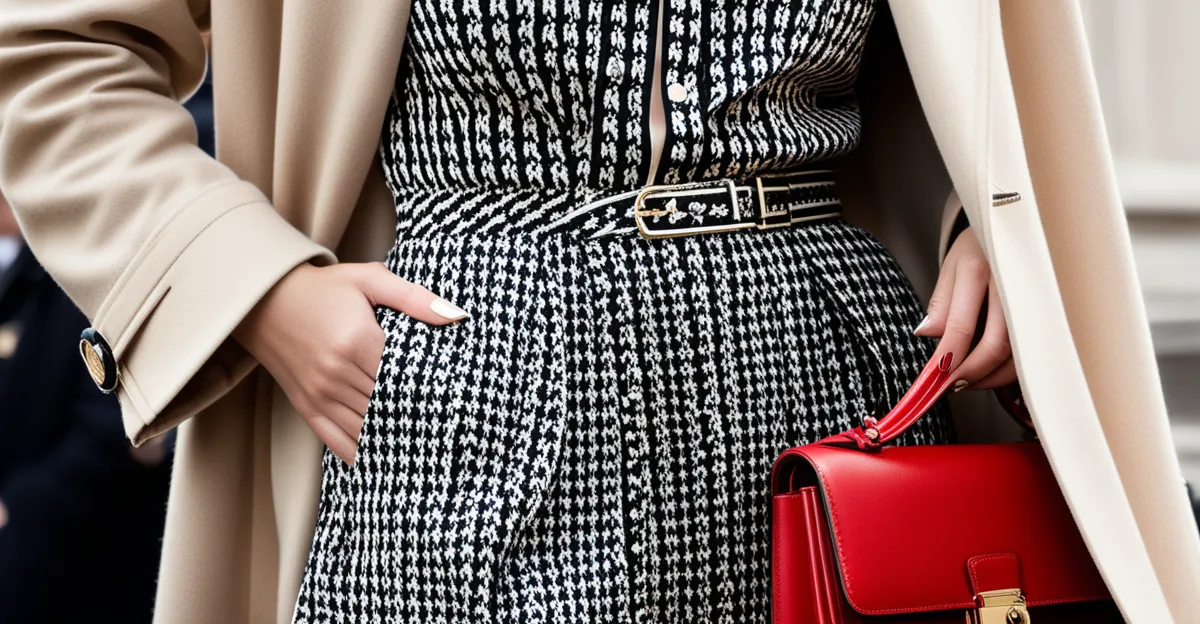Impact of Traditional UK Women’s Fashion on Modern Trends
Traditional UK fashion remains a cornerstone of women’s fashion influence both within Britain and globally. Distinctive elements such as tweed, tartan, precise tailoring, and the classic hats carry deep historical significance, rooted in British cultural identity and social history. Tweed, originally crafted for the countryside, has transitioned beyond its utilitarian origins to symbolize refined elegance. Similarly, tartan represents Scottish heritage but has been embraced widely in diverse fashion contexts.
These iconic elements continue to shape current trends visibly. Tweed jackets and tartan patterns frequently appear in modern collections, demonstrating enduring relevance. The meticulous British tailoring techniques serve as a benchmark for sharp, structured silhouettes seen on both runways and high-street fashion. Hats, once a symbol of class and tradition, have evolved into statement accessories that add a vintage yet fresh touch to contemporary looks.
Also to see : How Can UK Women’s Fashion Trends Influence Your Personal Style?
The influence of traditional UK fashion is also evident globally, as designers reinterpret these motifs to blend cultural respect with modern appeal. Whether through the formality of tailored coats or the casual reimagining of tartan skirts, these time-honored styles inject a unique British flavor into current fashion narratives. This fusion fosters a dialogue between past and present, underpinning the ongoing evolution of British style and its significance in women’s fashion today.
Modern Interpretations of Iconic Pieces
Traditional UK women’s fashion, notably through tweed jackets and tartan skirts, continues to profoundly inspire contemporary collections. Designers now reinterpret these classic fabrics and cuts by integrating them with modern silhouettes, creating pieces that blend heritage with innovation. For example, tweed, once primarily a material for countryside attire, has become central to stylish, versatile outerwear in urban settings. This evolution demonstrates how British textile heritage adapts to current trends without losing its distinct identity.
Topic to read : What Are the Latest Trends in UK Women’s Fashion for Summer?
British tailoring remains a benchmark in the fashion industry, prized for precision and structure. Many high-street brands emulate these British tailoring techniques to deliver sharp, refined garments accessible to a broader audience. Designers skillfully marry classic cuts with contemporary functionality, appealing both to tradition lovers and trend-conscious consumers. This fusion exemplifies the ongoing vintage style revival, where nostalgic elements coexist with modern demands.
Runways frequently showcase reinterpretations of these iconic pieces. Collections often feature traditional tweed jackets transformed with unexpected colors or asymmetrical cuts, while tartan skirts appear with fresh layering techniques aligned with today’s fashion sensibilities. These examples highlight how British tailoring and fabric heritage remain vital to designers aiming to balance respect for tradition with creative experimentation. Through such efforts, the vintage style revival gains momentum, reinforcing the enduring appeal of traditional UK fashion in present-day wardrobes.
Enduring Popularity of Heritage Brands
Heritage brands like Burberry, Barbour, and Liberty have cemented their position in women’s fashion by masterfully blending tradition and innovation. Burberry’s iconic trench coat, originally designed for military use, now stands as a symbol of refined British elegance worldwide. Its timeless silhouette and waterproof fabric combine technical innovation with classic design, appealing to both traditionalists and modern consumers. This fusion ensures Burberry remains a leading figure in the global luxury market.
Similarly, Barbour’s waxed jackets have deep roots in rural British culture yet continue thriving as versatile fashion staples. Their rugged durability complements contemporary tastes for functional yet stylish outerwear. Barbour’s ability to stay relevant lies in adhering to its heritage quality while integrating subtle modern updates, resonating with a diverse audience.
Liberty, famous for its distinctive floral prints, showcases how British luxury labels incorporate artistic heritage into contemporary fashion. The brand’s commitment to craftsmanship and design innovation reflects a broader trend among heritage brands maintaining relevance. These labels’ ongoing appeal is evident through their global recognition and loyal consumer base, who value the authenticity and quality hallmarking British heritage labels.
Influence on Global Fashion Scene
Traditional UK women’s fashion exerts a significant global fashion influence through the work of renowned British designers and fashion houses. Elements like tweed, tartan, and structured tailoring have transcended borders, becoming staples in international wardrobes. British style’s unique blend of heritage and modernity appeals worldwide, reflected in everything from luxury runways to street style.
How do UK fashion elements filter through modern, multicultural lenses? The answer lies in designers who reinterpret iconic British fabrics and cuts, integrating diverse cultural influences while retaining the essence of traditional UK fashion. This fusion enhances the versatility and relevance of British styles on the global stage.
Celebrity culture plays a pivotal role in amplifying these trends. Influential figures frequently sport British-inspired pieces, popularizing them across continents. The crossover between high fashion and streetwear often features tartan patterns or tweed fabrics reimagined with contemporary twists, further driving their international appeal.
In essence, the trend globalization influenced by British designers fosters a dynamic exchange where traditional UK motifs adapt fluidly, gaining new meanings and relevance. This continuous evolution confirms British women’s fashion as a vital force shaping worldwide style narratives today.




